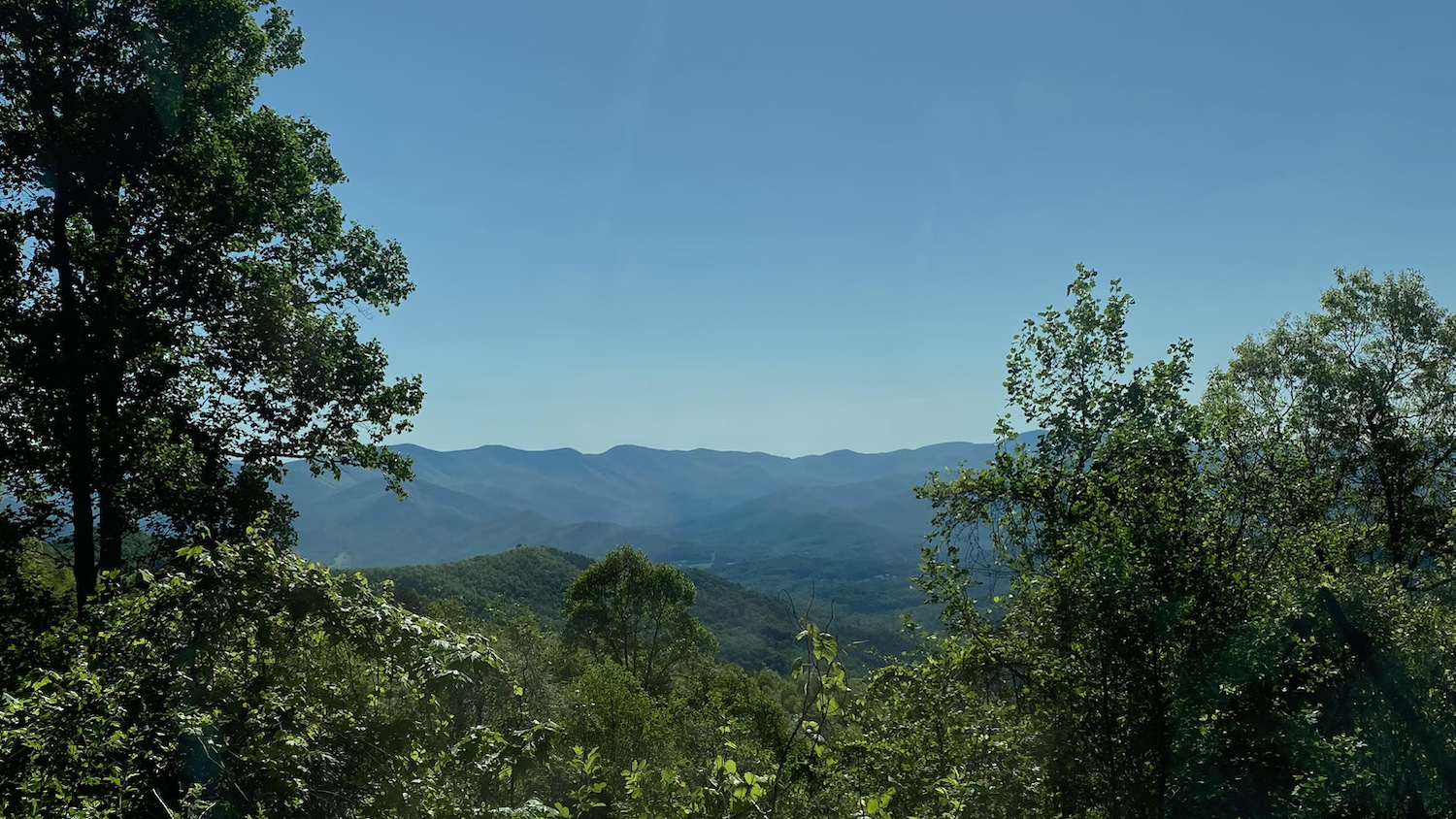Linking Forests and Freshwater

Editor’s note: Each semester, students in the Geospatial Analytics Ph.D. program can apply for a Geospatial Analytics Travel Award that supports research travel or presentations at conferences. The following is a guest post by travel award winner Katie McQuillan as part of the Student Travel series.
The Southeast US, historically considered water-rich, has become increasingly water-stressed in recent decades due a combination of rapid population growth, urbanization and agriculture. Forests act as natural water towers, supplying clean freshwater to over 150 million people in the US. The water quality and water quantity in the Southern Appalachian mountains (S. Apps) support the highest diversity of salamanders in the world and exceptional freshwater systems that support at least 66 at-risk aquatic species, 20 of which are federally listed as threatened or endangered. Large urban areas downstream from the S. Apps receive and benefit from water originating in the mountains. In fact, 40% of Charlotte’s drinking water originates in the S. Apps, and the city collectively serves three-quarters of a million people. Understanding how climate change will impact relationships between forests and water is important to plan for a future that will minimize ecological and societal water stress.
The water budget is made up of “green” and “blue” water. Green water is the water used by vegetation, and blue water is the remaining water that runs off into streams, rivers and lakes.
As climate changes, rising temperatures and shifting forest dynamics could increase green water, causing blue water to decrease. Small but important mountain watersheds, which serve as essential source regions for blue water and habitats supporting biodiversity, are most sensitive to changes in green water.
Changes in blue water are often measured using streamflow gages, with the majority of those gages located in large rivers. Despite the importance of small, high-altitude headwater streams, it is impractical to install gages in all of them due to their large number, which makes it difficult to quantify change in the water budget across forested mountains. To fill this gap, remotely sensed patterns of vegetation within headwater catchments can be used to characterize the partitioning of the water budget between green and blue water and how it changes over time.
This year I was honored to receive a Travel Award from the Center for Geospatial Analytics to attend the 2022 Annual Meeting of the Ecological Society of America (ESA) in Montreal, Canada. I presented my work quantifying how and why the water budget is changing in over 30,000 headwater catchments in the Southern Blue Ridge Ecoregion. We found green water had increased in almost half of the catchments since the 1980s, primarily due to indirect impacts of climate change like longer growing seasons, instead of directly due to hotter temperatures that allow air to hold more water. Using long-term streamflow records in larger sub-regional watersheds (average area 455 km2), we found that increases in green water set up the conditions that cause faster decreases in blue water during dry periods. Our work highlights the importance of accounting for forest-water feedbacks to support resilient forest- and water-based ecosystem services under changing climate conditions.
- Categories:


